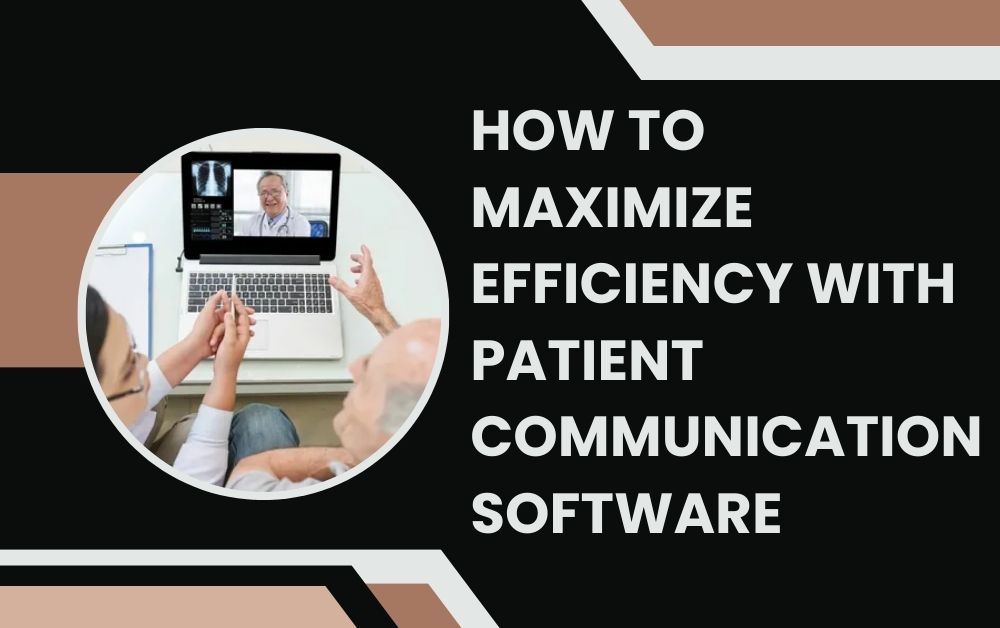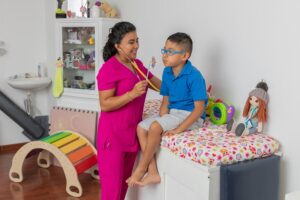
How to Maximize Efficiency with Patient Communication Software
Efficiency is essential in the hectic healthcare environment of today. Good communication between patients and healthcare professionals can greatly increase patient happiness, lower errors, and improve the quality of care. By streamlining these exchanges, patient communication software helps healthcare professionals better manage their processes and provide high-quality treatment. This blog will discuss how to get the most out of these potent tools by maximizing productivity with patient communication software. It will offer helpful hints and insights along the way.
Understanding the Basics of Patient Communication Software
Patient communication software encompasses a range of digital tools designed to facilitate and improve communication between healthcare providers and patients. These tools include features like appointment scheduling, automated reminders, secure messaging, telehealth capabilities, and patient portals. By integrating these features into a single platform, patient communication software simplifies the management of patient interactions, reducing the administrative burden on healthcare staff and enhancing the patient experience.
The primary goal of patient communication software is to create a seamless flow of information. This ensures that patients receive timely updates about their health and that healthcare providers can access and share patient information quickly and securely. Understanding the basics of how this software works is the first step towards maximizing its efficiency.
Note – Enhance Your Patient Communication Today! Ready to improve patient engagement and streamline your healthcare operations? Discover the power of cutting-edge Patient communication software with BlueSecures.ai.
Automating Routine Tasks
One of the most significant benefits of patient communication software is its ability to automate routine tasks. Appointment scheduling and reminders are two key areas where automation can save time and reduce errors. Instead of manually calling patients to remind them of upcoming appointments, the software can automatically send out reminders via text message, email, or phone call. This not only ensures that patients are aware of their appointments but also reduces the number of no-shows, which can disrupt the schedule and lead to wasted time.
Another routine task that can be automated is the sending of follow-up messages and health updates. For example, after a patient visit, the software can automatically send a summary of the visit, any prescribed medications, and follow-up instructions. This helps patients stay informed about their treatment plans and ensures they have all the necessary information at their fingertips.
By automating these tasks, healthcare providers can free up valuable time that can be better spent on direct patient care. This increases efficiency and allows for a more focused and personalized approach to healthcare.
Enhancing Patient Engagement
Patient communication software plays a crucial role in enhancing patient engagement. Engaged patients are more likely to follow their treatment plans, attend follow-up appointments, and take an active role in managing their health. The software provides multiple channels through which patients can communicate with their healthcare providers, ask questions, and access their medical information.
Secure messaging is a particularly valuable feature for patient engagement. Patients can send messages to their healthcare providers at any time, allowing for quick and convenient communication. This is especially useful for addressing minor concerns or clarifying instructions without the need for an in-person visit. The ability to communicate easily with healthcare providers helps patients feel more connected and supported, which can lead to better health outcomes.
Patient portals are another important aspect of patient communication software. These portals allow patients to view their medical records, test results, and appointment history. They can also update their personal information, request prescription refills, and schedule appointments. By giving patients access to their health information, the software empowers them to take control of their healthcare and make informed decisions.
Improving Workflow Efficiency
Improving workflow efficiency is one of the main objectives of patient communication software. By integrating various communication and administrative functions into a single platform, the software eliminates the need for multiple systems and reduces the risk of errors and miscommunication. This integrated approach ensures that all patient interactions are recorded and accessible to the entire healthcare team.
For example, when a patient schedules an appointment through the software, the information is automatically updated in the system and visible to all relevant staff members. This ensures that everyone is on the same page and can prepare for the patient’s visit accordingly. The software can also send automatic reminders to both patients and staff, ensuring that no appointments are missed and that the schedule runs smoothly.
The integration of electronic health records (EHR) with patient communication software further enhances workflow efficiency. Healthcare providers can access patient records, update information, and share data with other providers seamlessly. This reduces the time spent on administrative tasks and allows for more coordinated and efficient patient care.
Supporting Telehealth and Remote Care
The rise of telehealth has made patient communication software even more essential. Telehealth allows patients to receive care remotely, which is particularly beneficial for those with mobility issues, living in remote areas, or during times when in-person visits are not feasible, such as during a pandemic. Patient communication software supports telehealth by providing a secure platform for virtual consultations, secure messaging, and remote monitoring.
Virtual consultations are a key feature of telehealth. Patients can schedule and attend appointments with their healthcare providers from the comfort of their homes. The software ensures that these consultations are conducted securely and that all necessary information is shared during the visit. This not only saves time for both patients and providers but also expands access to healthcare services.
Remote monitoring is another important aspect of telehealth supported by patient communication software. Patients can use devices to monitor their health metrics, such as blood pressure or glucose levels, and share this data with their healthcare providers in real-time. This continuous flow of information allows for timely interventions and adjustments to treatment plans, improving patient outcomes.
Ensuring Data Security and Compliance
Data security and compliance are critical considerations when using patient communication software. Healthcare providers must ensure that patient information is protected and that the software complies with regulations such as the Health Insurance Portability and Accountability Act (HIPAA) in the United States. Secure messaging, encrypted data storage, and access controls are essential features that help protect patient information.
Patient communication software should include robust security measures to safeguard sensitive data. This includes encryption of data both in transit and at rest, multi-factor authentication for accessing the system, and regular security audits to identify and address vulnerabilities. By implementing these security measures, healthcare providers can ensure that patient information is protected and that the software meets regulatory requirements.
In addition to security, the software should also support compliance with healthcare regulations. This includes maintaining accurate and up-to-date records, providing patients with access to their information, and ensuring that all communication is documented and traceable. Compliance with these regulations not only protects patient information but also builds trust with patients and ensures the integrity of the healthcare system.
Conclusion
In conclusion, patient communication software is a powerful tool that can significantly enhance efficiency in healthcare settings. By automating routine tasks, enhancing patient engagement, improving workflow efficiency, supporting telehealth, and ensuring data security and compliance, the software helps healthcare providers deliver better care and improve patient outcomes. As the healthcare industry continues to evolve, investing in robust patient communication software will be essential for staying competitive and meeting the needs of patients.
By embracing these technologies, healthcare providers can create a more efficient, patient-centered approach to care that benefits both patients and providers. Whether you are looking to streamline your administrative processes, enhance patient engagement, or support remote care, patient communication software is an essential tool for modern healthcare.
For more insightful articles related to this topic, feel free to visit liveblogaus.com


